William Merrell Vories and Omihachiman
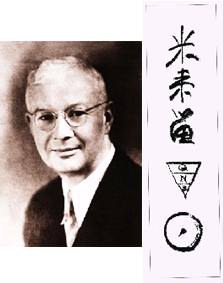 William Merrell Vories (1880–1964) was an American-born architect, businessman, and Christian missionary who lived and worked in Omihachiman for the greater part of his life. Vories left a rich legacy that remains conspicuous in the city today. He is best known for his architecture, having designed more than 1,600 buildings throughout Japan during his career. In Omihachiman, however, Vories is also fondly remembered for his community spirit and dedication to public service.
William Merrell Vories (1880–1964) was an American-born architect, businessman, and Christian missionary who lived and worked in Omihachiman for the greater part of his life. Vories left a rich legacy that remains conspicuous in the city today. He is best known for his architecture, having designed more than 1,600 buildings throughout Japan during his career. In Omihachiman, however, Vories is also fondly remembered for his community spirit and dedication to public service.
Vories the architect
Vories was born in Leavenworth, Kansas, and first came to Omihachiman at the age of 24, in 1905. He had been hired as an English teacher to work at Shiga Prefectural Commercial High School (now Hachiman Commercial High School), but his main aim was to dedicate his life to Christian missionary work. However, his popular Bible study classes and vigorous proselytizing led to protests from local residents concerned about the spread of a foreign religion, and Vories was dismissed from his teaching job after two years.
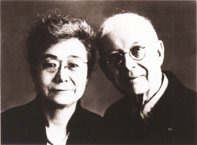
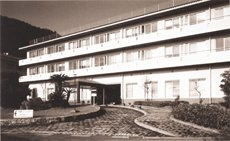
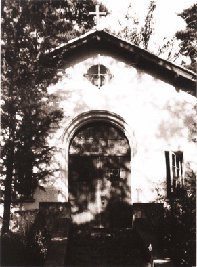
Undeterred, Vories decided to pursue a different career to fund his missionary activity. He had studied architecture briefly in the United States, and in 1907 he was asked to design the Omihachiman YMCA building. This assignment encouraged Vories to set up his own architectural office the following year. He had been an active member of the YMCA since his college days, and this was to provide him with a ready-made network of contacts in Japan. Thanks to these connections, Vories received many commissions to design churches, YMCA buildings, and private residences. As his reputation grew, his work came to include larger projects such as schools and hospitals.
Vories’s buildings generally looked Western but were adapted to the Japanese climate and way of life. He brought a fresh approach to each project, tailoring his designs to the needs and preferences of the people who would use each building. For this reason, every Vories design was completely original.
Vories was largely self-taught as an architect, but he was instrumental in introducing modern Western architecture to Japan. His buildings can be seen from Hokkaido in the north to Kyushu in the south, as well as in Korea, Taiwan, and parts of China, which were Japanese colonies prior to the end of World War II. In Japan, some of his most famous structures are the Hilltop Hotel in Ochanomizu, Tokyo, the Daimaru department store in Shinsaibashi, Osaka, and the campus of Kwansei Gakuin University in Nishinomiya, Hyogo Prefecture. Buildings by Vories of particular interest in Omihachiman include the Old Hachiman Post Office, a cluster of colonial-style residential buildings in the Ikedamachi district, and Vories Memorial Hall, which was Vories’s final home and now houses a museum that commemorates his life and achievements.
Building God’s kingdom
Vories loved architecture, but building God’s kingdom on Earth was his greater goal. In 1911, he established the Omi Mission as an umbrella organization for his missionary activities and began spreading the message of Christianity throughout Shiga Prefecture, including by means of a motorboat on which he sped across Lake Biwa. In order to raise more money for these activities, Vories set up a company in 1920 to import and sell a medical ointment called Mentholatum, which was developed in his native United States by Albert Alexander Hyde, a philanthropist and generous YMCA supporter. The company Vories established to sell this product still operates under the name Omi Brotherhood Ltd. and sells Menturm, a product similar to Mentholatum.
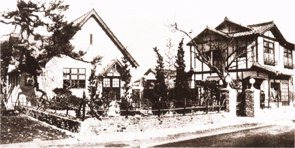
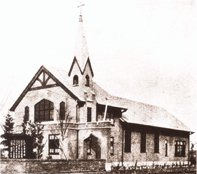
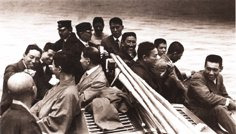
Vories’s missionary spirit included a strong commitment to public service. With the help of his wife Makiko, he raised funds for the building of several educational and medical facilities in the Omihachiman area. His temperament and personal philosophy, which emphasized the importance of hard work and thrift, were compatible with the ideals that local residents treasured as central to Omihachiman’s mercantile heritage. Like the merchants whose shrewd dealing and public-spiritedness helped the town prosper during the Edo period (1603–1867), Vories believed his work should be not only for his own profit but also for the benefit of his clients and society at large. Perhaps because of these commonalities, he was able to form long-lasting relationships with local residents.
Vories became a naturalized citizen in 1941 and changed his name to Hitotsuyanagi Mereru. He wrote Mereru with characters that mean “came from America and stayed,” signifying that he would live out his days in Japan. He considered Omihachiman the center of the world, a place to which God’s providence had led him.
Although Vories’s Bible classes had initially aroused distrust, his contributions to Omihachiman would eventually be recognized, and in 1958, he was made the city’s first honorary citizen. Vories came to Omihachiman with nothing but his ideals, but by working together with local residents he built not only buildings but also business enterprises, schools, and hospitals. Many of the companies and organizations he founded continue his work to this day.